• (الخبز المغربي (كسرى •
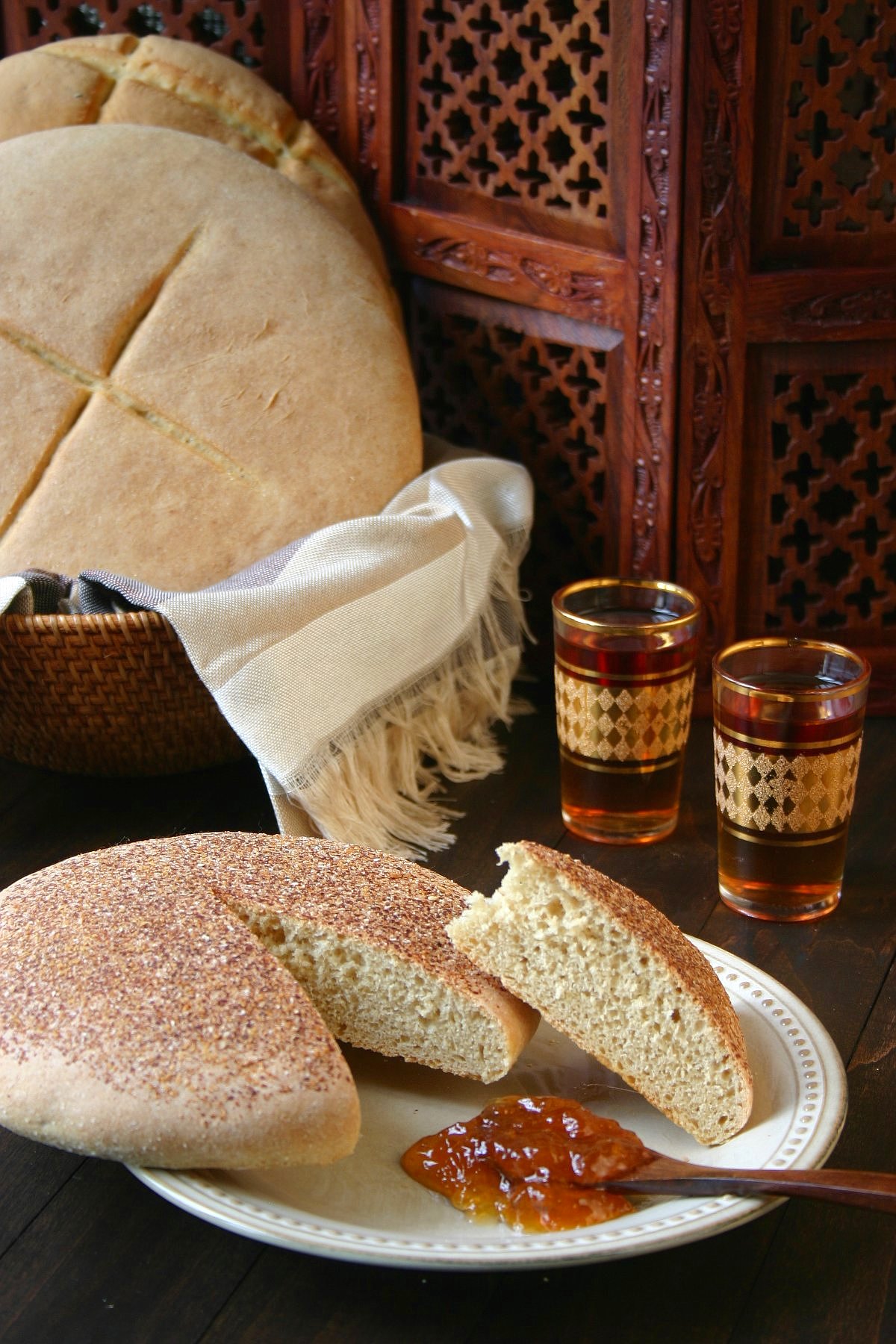
This traditional bread is a daily staple on the table of millions of North Africans. Wonderful for dunking into a spicy soup or sopping up the fragrant sauce of a tajine, you’ll love this easy to make recipe for Moroccan-style kesra bread.
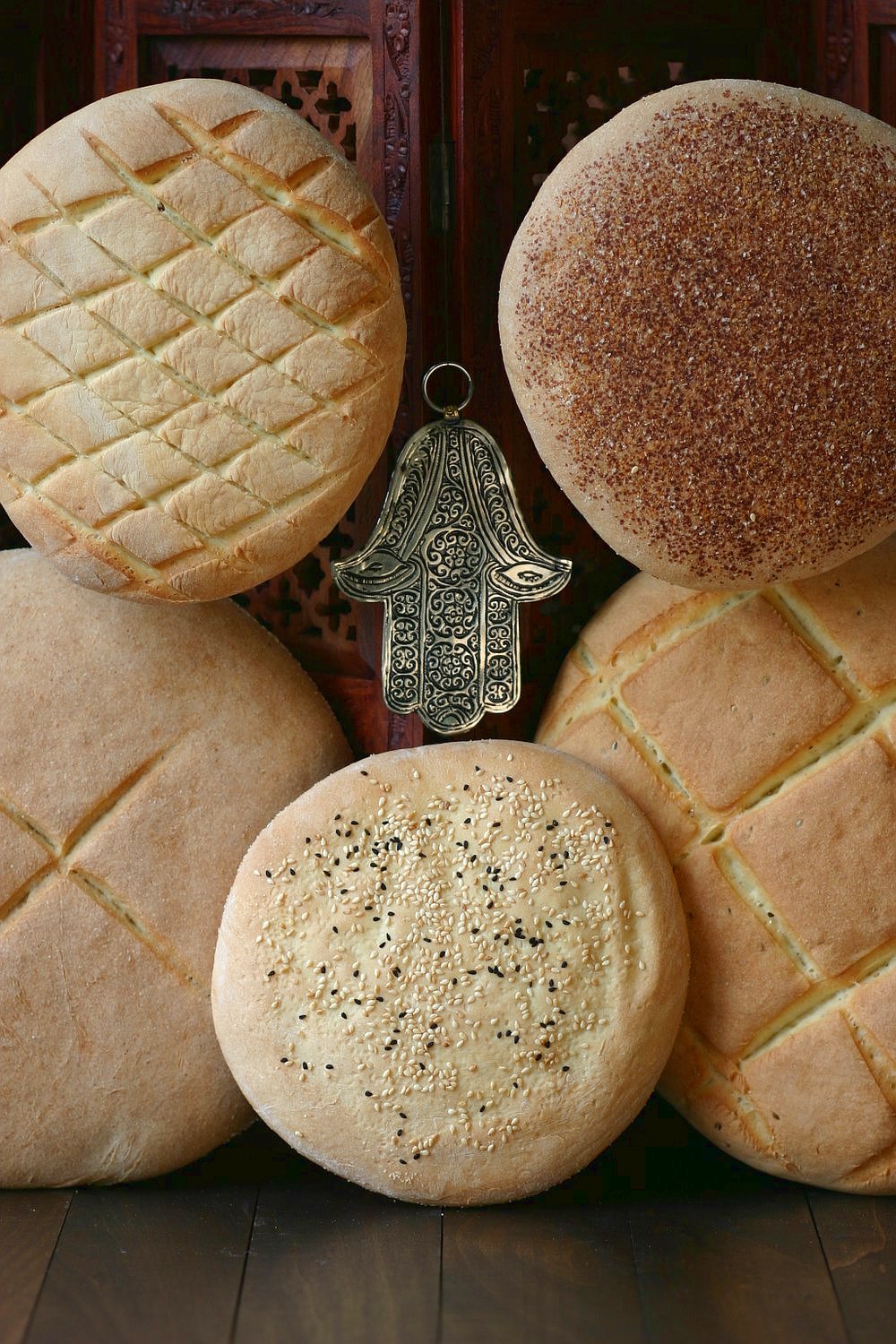
On a recent trip to Casablanca and Marrakesh, Morocco, I had the pleasure of eating as many loaves of kesra bread as possible. It is sold everywhere at all times of the day, as it is often eaten at every meal. On one day, for example, I had it for breakfast with amlou (a spread that’s like almond butter), argan oil, and apricot jam. Lunch was lentil soup with more kesra. And for dinner, I had an aromatic vegetable tagine with even more kesra! No complaints here…I love this hearty bread!
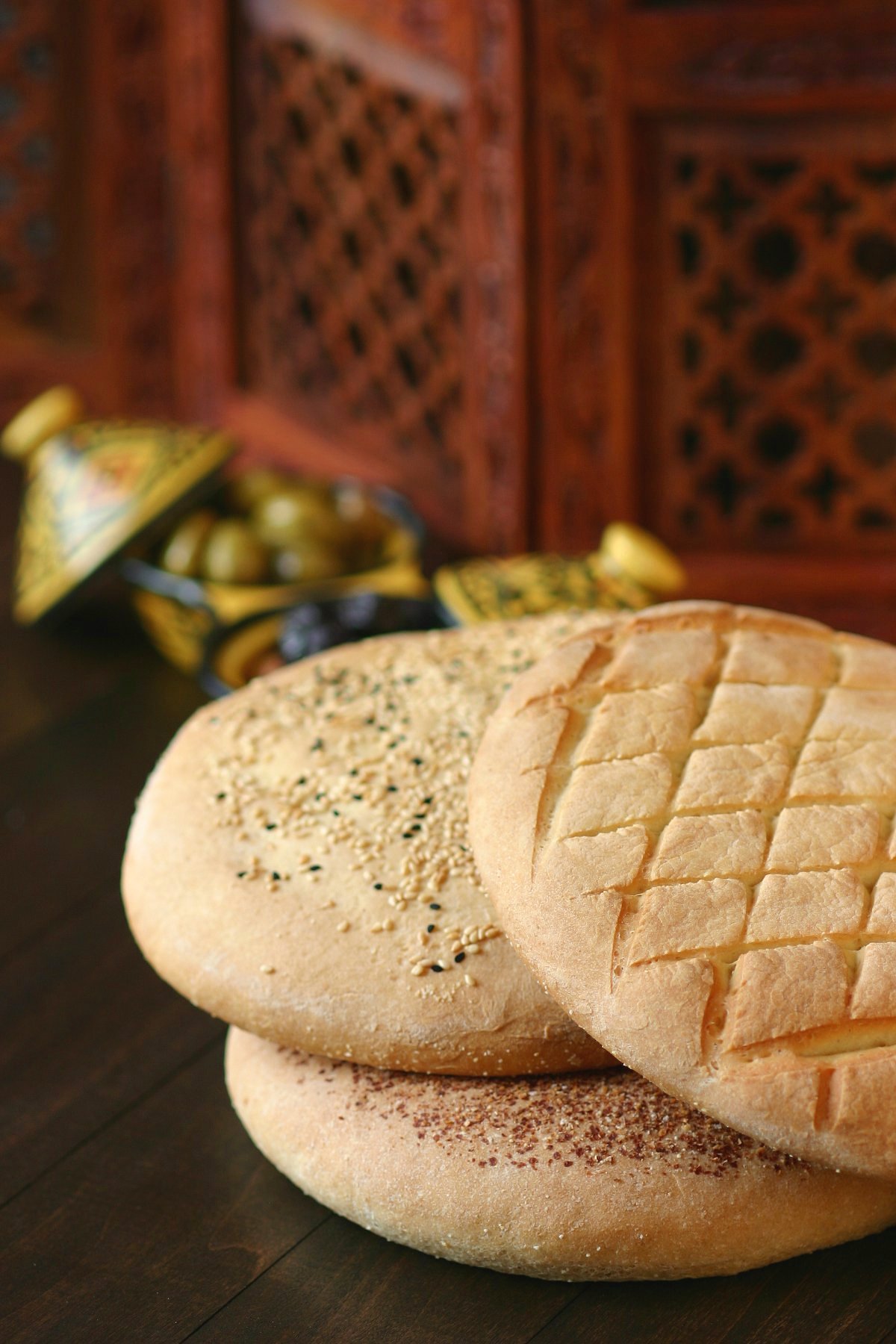
Traditionally, anise seeds are baked into the dough for a lovely, delicate flavor. Having said that, this bread is very versatile and can be personalized to your liking. So if you’re not a fan of anise, you can add thyme, caraway seeds, or nigella seeds. Or instead, cover the top of the loaf with toasted sesame seeds, wheat germ, or chopped fresh rosemary.
This bread also freezes well, so go ahead and make more than you may need and freeze the baked and cooled loaves in plastic bags. Simply remove from the freezer and thaw on the counter for 2 hours and afterwards reheat them, if desired. Try serving it with Spiced Carrot Soup or Zaalouk (a Moroccan eggplant salad).
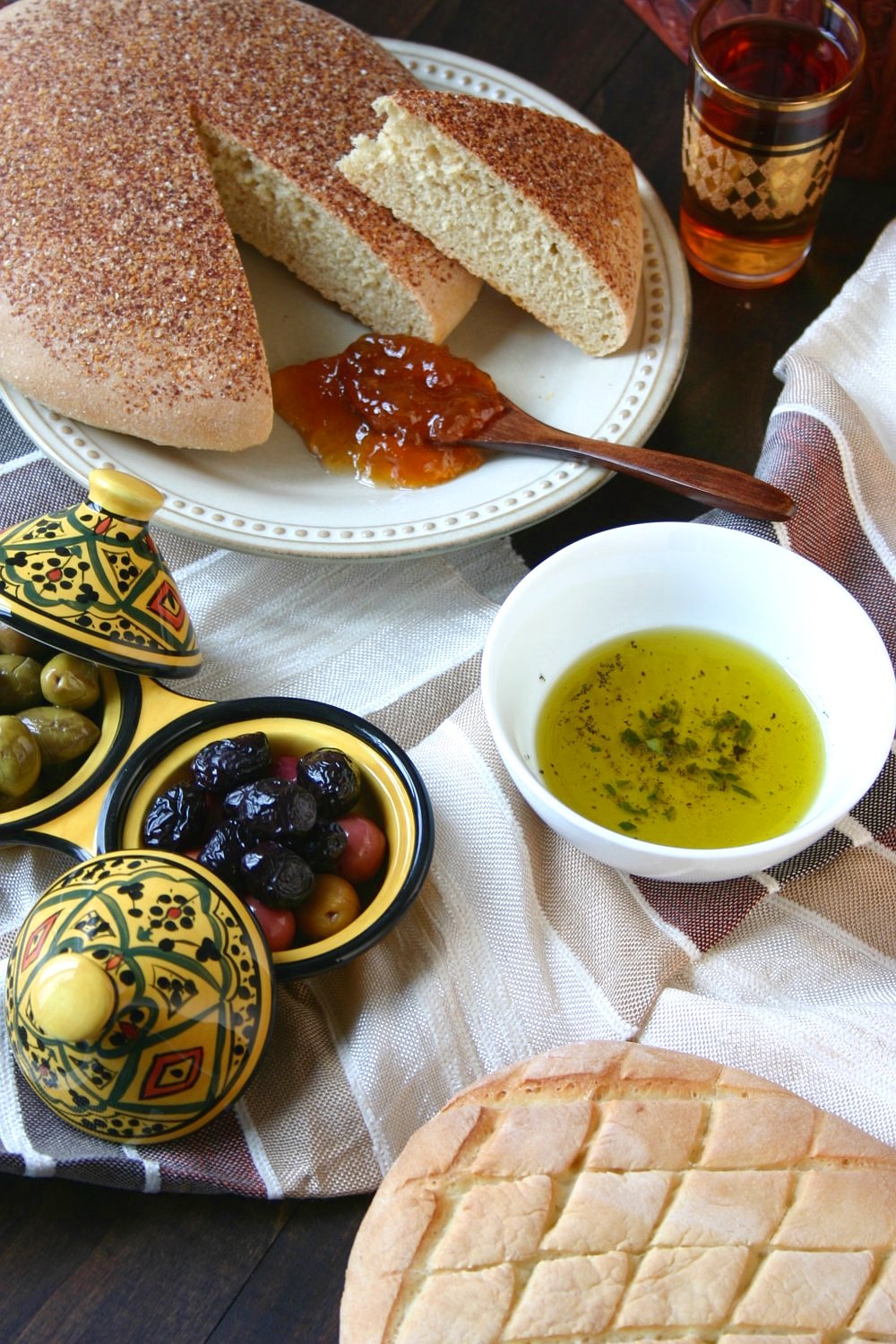
- 1½ teaspoons active dry yeast
- 1½ cup plus 2 Tablespoons warm water
- 2 Tablespoons olive oil
- 2 cups all purpose flour or whole wheat flour
- 2 cups semolina flour
- 1½ teaspoons sea salt
- Any herbs or spices you want to knead into the dough or top the loaves with
- Whisk the yeast into the water. The water temperature should be around 105°F. Add in the olive oil and set aside.
- Combine the flours and salt in an electric mixer equipped with a dough hook. Alternatively, you can mix the dough by hand in a large bowl.
- After letting the yeast activate for 5-10 minutes, pour the water, yeast, and oil mixture into the flour mixture and blend thoroughly until you have a smooth, uniform dough--3 minutes in a mixer, 10 minutes if by hand. It shouldn't be too tacky to the touch. If it is, add more flour, 2 Tablespoons at a time. If it appears too dry, add more water, 1 Tablespoon at a time.
- Remove the ball of dough from the bowl and divide it in half for two 9-inch diameter loaves or divide into quarters for four 5-inch diameter loaves. Set these divided balls of dough aside for 10 minutes to allow the gluten to rest. *If you are adding in any herbs or spices, do so now.
- After 10 minutes, on a lightly floured surface, flatten out the balls of dough into discs using your fingers, trying to preserve a circular shape as much as possible.
- Place these flattened discs onto baking sheets. If you want to add any toppings, you can do this now by sprinkling some water on the tops of the discs of dough and smearing it into the surface with your hand until tacky. Sprinkle with the toppings and press them into the dough lightly to ensure that they stick.
- Cover the baking sheets with hand towels and set aside in a draft-free place for 1 hour.
- After 1 hour, place your bread into an oven that has been preheated to 425°F.
- Bake for 20-25 minutes or until the bread is golden brown and makes a hollow sound when you tap the bottom of the loaf. Cool for 15 minutes and serve.
-If you prefer your bread to remain soft rather than crusty, there's a simple trick: When the loaves come out of the oven, cover them with a dish towel and let them cool completely under it.
-If you want to add some herbs or spices to the bread, use 4 teaspoons per recipe. So if you want a whole recipe of anise seed kesra, knead in 4 teaspoons of whole anise seed right before you rest the dough balls.

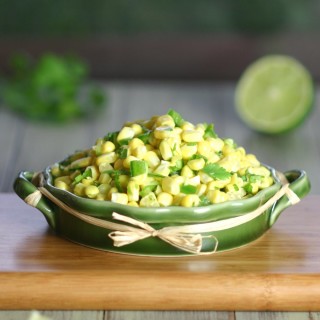
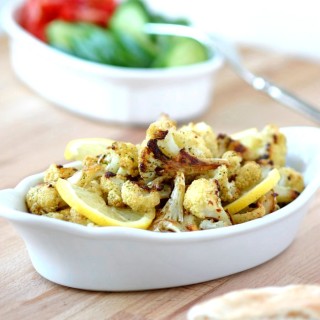
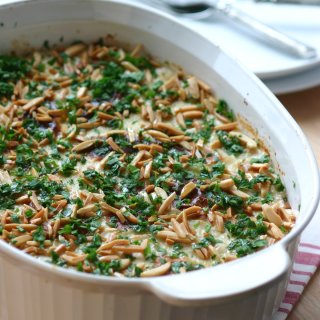
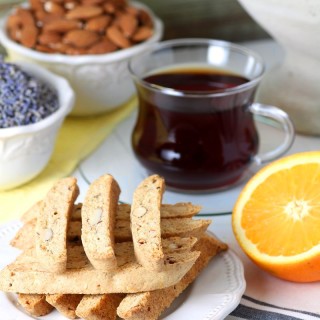

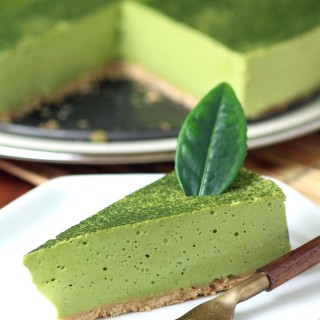
I’ve always wanted to make this bread but imagined it would be too difficult. This step-by-step guide is perfect for a beginner like me! Thank you!
You’re right, it is so simple to make. I also love adding different things to the dough. Last week I did a zaatar and chopped olives version!
Please can someone tell me which flour I can use,maybe put a picture to do this delicious bread
Hi Alex! Traditionally, this bread is made with a combination of normal all purpose or whole wheat flour and semolina flour. Semolina flour is a yellowish flour made from durum (hard) wheat. It’s used to make pastas, breads, etc. You sometimes see it in a coarser variety (that’s used for cream of wheat, porridge). But for this recipe, you want the finely ground semolina flour. Find it in the supermarket near the all purpose flour or in the Latin foods section. You can also find it in Italian, Middle Eastern, and Indian markets.
Let me know if you need more help!
Thank you so much Omar and I really appreciate ur help
I feel so silly, my eyes are filled with tears! I LOVED this bread so much while I was an exchange student in Morocco and after a few years lost ties with my host family. EVERY Moroccan bread recipe I have found is NOT RIGHT – too fluffy usually. Even if a recipe was by a Moroccan it wasnt like my host family’s. I have missed this breadand its texture which I can see in your pics for 20 years! I am sooooooooooo excited to try your recipe. Shukran, shukran, shukraaaaaaaaaaaaaan!
How nice Colleen! No silliness at all—I know how food and certain flavors can bring somebody back to a distant place (It’s kind of why I started this blog! 🙂 ) I really hope the recipe lives up to the fond memories you have of Moroccan bread. You’re right, the bread in Morocco is not as fluffly. Rather, it has a pleasantly drier, denser crumb. The semolina flour certainly helps, I think. And really, this bread is not hard to make at all…it can become an everyday thing haha! ‘Afwan! 🙂
What are some traditional herbs and spices that are added to Kesra, other than anise?
Hi Andrew, nigella seeds are also often kneaded into the dough. They are excellent. Other than that, fennel would be appropriate (although that’s similar in taste to anise if you’re not a fan of it). Sesame seeds are another common topping. Dried or fresh herbs are also great additions, although perhaps not totally traditional!
My host family in Morocco never added anything to the top of their bread BUT here in the gulf very tasty breads have nigella seeds (heba soada) which is also valued in Islam for its benefits according to our last Prophet Mohammed and they do taste great on bread yet not so much alone, caraway seeds, a rubbing of a thyme mixture called zataar, poppyseeds (rarely avail lately), sesame seeds and a personal favorite I came up with because i like the color and flavor sumac with sea salt. In Morocco the bread in my experience is eaten with tea in the morning or dipped in tajine later on, so I never found it flavored with toppings which would effect both moments but thats not to say it doesnt happen. Also there is an economic aspect to adding extras. Moroccan bread though is my fav bread worldwide.
Thumbs up to everything Colleen said! She knows her breads! 🙂 🙂
I love your bread recipe, I’ve tried many as I bake fresh Moroccan bread on a daily basis and by far this one is the best! I’d love to see your recipe for msemen ?. Next I will be trying your eggplant salad recipe.
Thanks so much Joanna! Oh… I see you know your Moroccan breads very well, indeed. I definitely will be sharing my recipes for msemen, baghrir, etc. Enjoy! 😀
Can I leave the bread out longer the flattened discs out longer than an hour?
Hi Darnell, I hope my response is not too late for you! You can leave it longer than an hour, especially if your kitchen is on the colder side. But in a warm environment, if you leave it for more than 2 hours or so, the yeast will become overactive and the texture/crumb of the bread will be affected—the bubbles will make it more holey (also the yeasty taste may be more pronounced). Enjoy!
Nice. Just came back from a trip to Marrakech and decided to have a crack at making khobz. Thanks for the recipe… there are so many recipes seem to forget the semolina… I thought the is essential.
Thanks Tim, give it a go! It’s really easy too. I agree—the semolina is what makes it! Now you got me thinking of all the bread I ate in Marrakech….. 😀
Hi Omar,
I’ve just tried this and had a bit of a disaster! Entirely my fault I suspect, I think my yeast is a bit old and that I’ve set my oven too hot. Is the temperature that you’ve stated for a normal oven? Mine is a fan oven, so I didn’t know whether I need to reduce it.
I’ll give this another go later in the week hopefully, when I’ve more time.
Thanks!
Oh no! Let’s try to fix this. Did it not rise properly or did it brown too quickly? From your details I’m thinking the oven may have been too hot. The temperature in the recipe is for regular ovens but since you have a convection oven, it’s best to bake at 25 degrees F lower (that’s a general rule I use when using convection). So that would make the ideal temp for convection baking at about 400F or 200C.
Let me know it works. Let’s figure this out so you can start enjoying this Moroccan bread!
I’ve just given it another go and it’s been a lot more successful! The crumb was still a little denser that what I remember, I might need to adjust down the semolina slightly. Also the crust was a little tough, but I left it in for 25 minutes, so probably a little long.
All in all, I’m very happy and look forward to perfecting them. Thank you for your help Omar!
Can you believe finally after all of this time Im trying this recipe! Thanks to Mike I was updated on this thread and knew I had bought the semolina for a reason! Lol They are currently rising before baking…with a nigella seed / sumac topping. Fingers crossed!!!
Better late than never, Colleen! Mmm sumac topping…I like your style! ?
They turned out great! Ill post a pic and tag you on IG. I made really mini ones…so the size of bread rolls but with the hash design, sumac & heba soda. As they were smaller they baked through in 15 min. Also I always feed my yeast a sprinkling of sugar, about a teaspoon, its the only thing I changed and I kneeded by hand. I really have to thank you for this recipe…as I stated why way above but also I often fail at breads. I hope the others have success. Its a different texture dough than other doughs, its very dense before baking, perhaps it worries some so they add water etc but it makes a lovely bread…REALLY Moroccan lol.